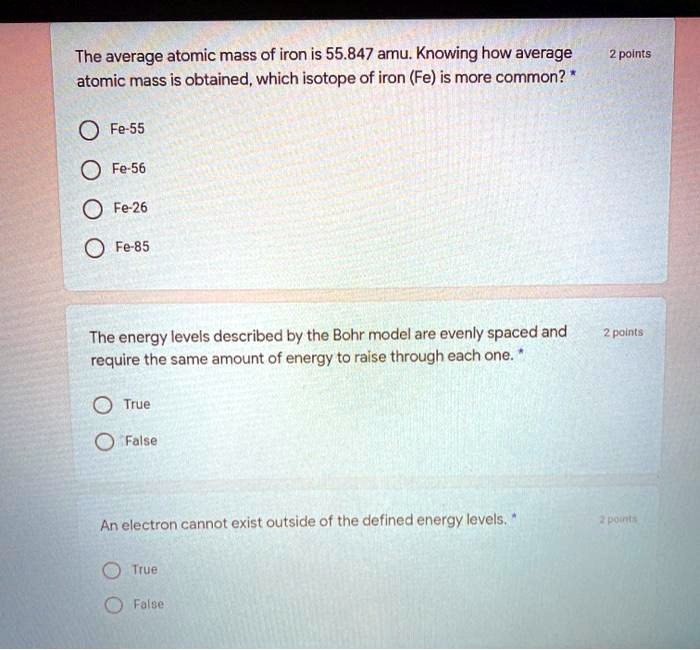The average atomic mass of iron is 55.847 amu. Knowing how average atomic mass is obtained, which isotope of iron (Fe) is more common? * Fe-55 Fe-56 Fe-26 Fe-85 The energy levels described by the Bohr model are evenly spaced and require the same amount of energy to raise through each one. * True False An electron cannot exist outside of the defined energy levels. * True False

The Correct Answer and Explanation is:
Here are the correct answers and a detailed explanation:
- Fe-56 is the most common isotope of iron.
- False — the Bohr model’s energy levels are not evenly spaced.
- True — electrons cannot exist outside of the defined energy levels.
The average atomic mass of an element reflects a weighted average of all its naturally occurring isotopes. Iron has an average atomic mass of 55.847 amu, which is very close to the mass of the isotope Fe-56. This suggests that Fe-56 contributes most heavily to this average, making it the most abundant isotope. Other options, such as Fe-55 and Fe-85, differ too much from the average, while Fe-26 does not exist as a known isotope of iron.
The Bohr model introduced the idea of quantized energy levels for electrons orbiting the nucleus. However, it is incorrect to state that the energy levels are evenly spaced. In hydrogen, for example, the energy required to jump between lower energy levels is significantly greater than that required between higher levels. The gap between the first and second energy levels is larger than the gap between the fourth and fifth. This means that energy levels are not equally spaced and require different amounts of energy to transition between them.
As for the third statement, electrons in an atom are confined to specific energy levels determined by quantum mechanics. They cannot exist in arbitrary regions between these levels. An electron must absorb or emit a precise quantum of energy to move to another permitted level. If it lacks sufficient energy, it cannot transition, nor can it linger in between defined orbits. Hence, the Bohr model correctly asserts that electrons are restricted to fixed energy states within an atom.
